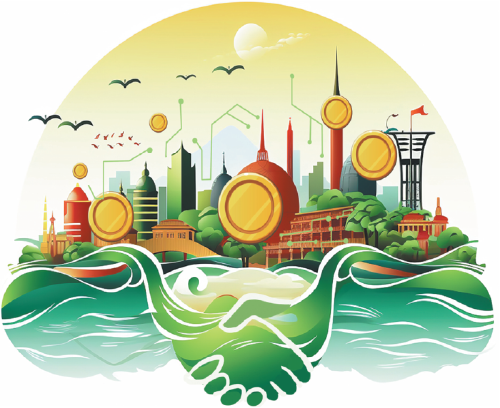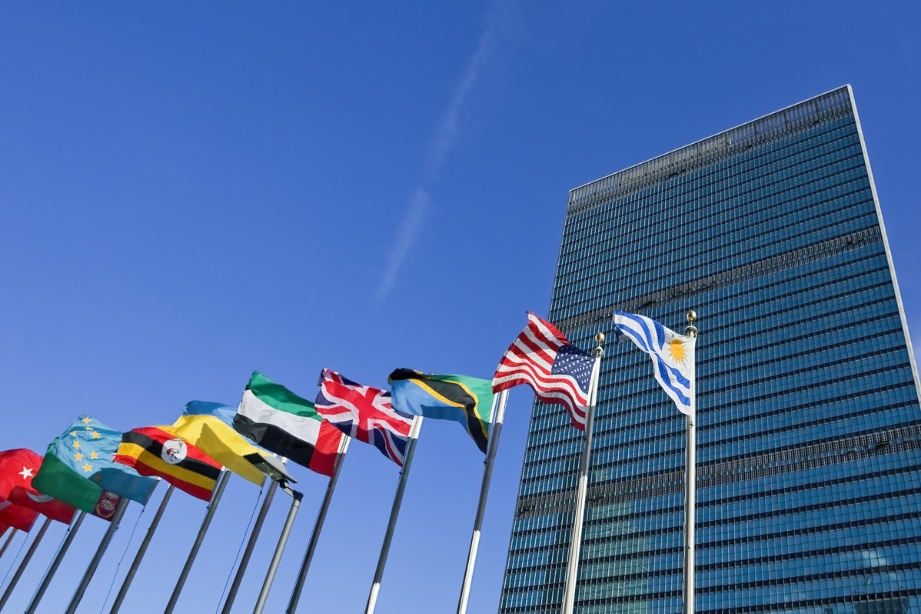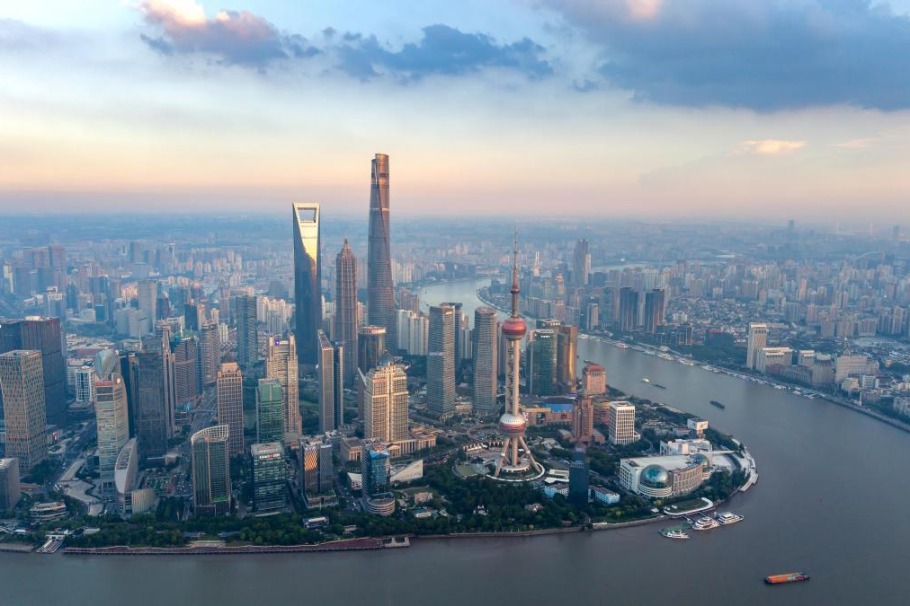Shared benefits
BRI has the potential to help Bangladesh achieve its development goals of becoming a middle-income country by 2041

BRI has the potential to help Bangladesh achieve its development goals of becoming a middle-income country by 2041

During my four years as Bangladesh's ambassador to China from August 1987 to October 1991, I was fortunate enough to witness a country in the midst of a major socio-economic transformation. China's transformation during the 1980s and 1990s was marked by rapid economic growth, a wide range of reforms, and a generational turning point. The phenomenal transformation that was taking place was further accelerated during the first two decades of the 21st century.
My most recent visit to Beijing in September this year once again reaffirmed my conviction that China, with its $18 trillion economy in 2022, is a global economic superpower. Bangladesh is also going through a major economic transition as it will officially graduate from its current status as a least developed country to that of a developing country in 2026. As such, it can greatly benefit from optimizing its potential by strengthening its economic cooperation with China.
China and Bangladesh have been cultivating a strong and prosperous bilateral relationship for many years. With their shared history, geographical proximity, and economic complementarity, both countries have a lot to gain from further enhancing their strategic partnership.
The current state of China-Bangladesh relations can be characterized as dynamic and multifaceted. Over the years, both countries have actively engaged in diplomatic exchanges, economic cooperation, and people-to-people interactions. China has become an essential development partner for Bangladesh, providing significant investment, infrastructure development, and technical support. In 2022, China was one of the largest foreign investors in Bangladesh, investing close to $187 million.
One of the core strengths of China-Bangladesh ties lies in their economic cooperation. China has been playing a crucial role in Bangladesh's infrastructure development through various projects, including the construction of roads, bridges, rail lines, power plants, and ports.
One of the most recent examples of China's infrastructure support to Bangladesh was the construction of the Padma Bridge, the largest infrastructure project in Bangladesh's history. This bridge will enhance connectivity, boost trade and commerce, and facilitate economic growth in the country.
Furthermore, China and Bangladesh have been working together to promote trade and investment. In recent years, bilateral trade between the two countries has been growing steadily. According to data from the Chinese government, the total trade volume between China and Bangladesh reached nearly $28 billion last year.
The Belt and Road Initiative, a global infrastructure development initiative proposed by China in 2013, aims to connect China with other countries in Asia, Europe, and Africa through a network of roads, railways, ports, and other infrastructure projects. During the state visit of Chinese President Xi Jinping to Bangladesh in October 2016, Bangladesh and China signed a memorandum of understanding on strengthening investment and production capacity cooperation to which a list of 27 key projects to be considered for promotion by both sides were attached. A further 13 agreements were signed between companies in the private sector of the two countries.
Bangladesh is one of the key countries in the BRI. It is located at the crossroads of South Asia and Southeast Asia, making it a strategic location for trade and connectivity. Bangladesh has enjoyed consistent annual GDP growth of more than six percent over the past decade, with the exception of the COVID-induced economic slowdown in 2020.
The BRI has the potential to help transform Bangladesh's economy and society. It can help to improve infrastructure, boost trade and investment, and create jobs. In the long term, the initiative can help Bangladesh to achieve its goal of becoming a middle-income country by 2041 through its Vision 2041 plan.
There are a number of key Belt and Road projects that have already been completed or are underway in Bangladesh. The Chinese Economic and Industrial Zone (CEIZ) is an 800-acre economic zone located in Chattogram District, Bangladesh. It is being developed by China Road and Bridge Corporation and is expected to attract over $10 billion in investment. The CEIZ will create jobs and boost exports for Bangladesh.
The Payra Port is a deep-sea port located in Patuakhali District. It is being developed by the Bangladesh government with support from a consortium of companies including two Chinese companies. The Payra Port will be the third deep-sea port in Bangladesh and will help to boost trade and investment in the country.
The Dhaka-Chittagong Railway Project is a 221-kilometer-long railway line that will connect the capital city of Dhaka with the port city of Chittagong. It is being constructed with Chinese assistance and is expected to be completed in 2025.The Dhaka-Chittagong Railway Project will reduce travel time between the two cities and boost trade and investment.
The Padma Bridge Rail link, the Karnaphuli Tunnel, the Elevated Dhaka Expressway and the 8th Bangladesh China friendship Bridge are some of the other important connectivity projects.
These are just a few of the many Belt and Road projects underway in Bangladesh. The BRI is having a major impact on the country's infrastructure development and is expected to play a key role in Bangladesh's future development.
The BRI can provide a number of benefits for Bangladesh.
First, improved infrastructure. The initiative is helping Bangladesh to improve its infrastructure, including roads, railways, ports, and power plants. This will reduce trade costs, boost economic growth, and create jobs.
Second, increased trade and investment. The initiative is helping to connect Bangladesh with other countries in Asia, Europe, and Africa. This will increase trade and investment opportunities for Bangladesh.
Third, technology transfer. The initiative is also helping to transfer technology and skills from China to Bangladesh. This will help Bangladesh to develop its own industries and boost its competitiveness.
Fourth, job creation. The initiative is creating jobs in Bangladesh, both directly and indirectly. The direct jobs are in the construction and operation of Belt and Road projects. The indirect jobs are in the industries that support these projects, such as manufacturing and transportation.
The BRI is expected to have a major impact on Bangladesh's future development. It will also help to connect Bangladesh with the global economy and make it a more attractive destination for foreign investment.
Meanwhile, it is also important to note that the BRI is not without challenges, including the financing of projects and their environmental impact. It is important that governments, including the Bangladeshi government, take these challenges into careful consideration during their participation in Belt and Road cooperation.
Overall, the BRI is a positive development for Bangladesh. The initiative has the potential to help Bangladesh achieve its development goals and become a more prosperous country.
The author is a former foreign secretary of Bangladesh, a former Bangladesh ambassador to China and a distinguished fellow at the Bangladesh Enterprise Institute, an independent research institute based in Dhaka, Bangladesh. The author contributed this article to China Watch, a think tank powered by China Daily.
Contact the editor at editor@chinawatch.cn.

































